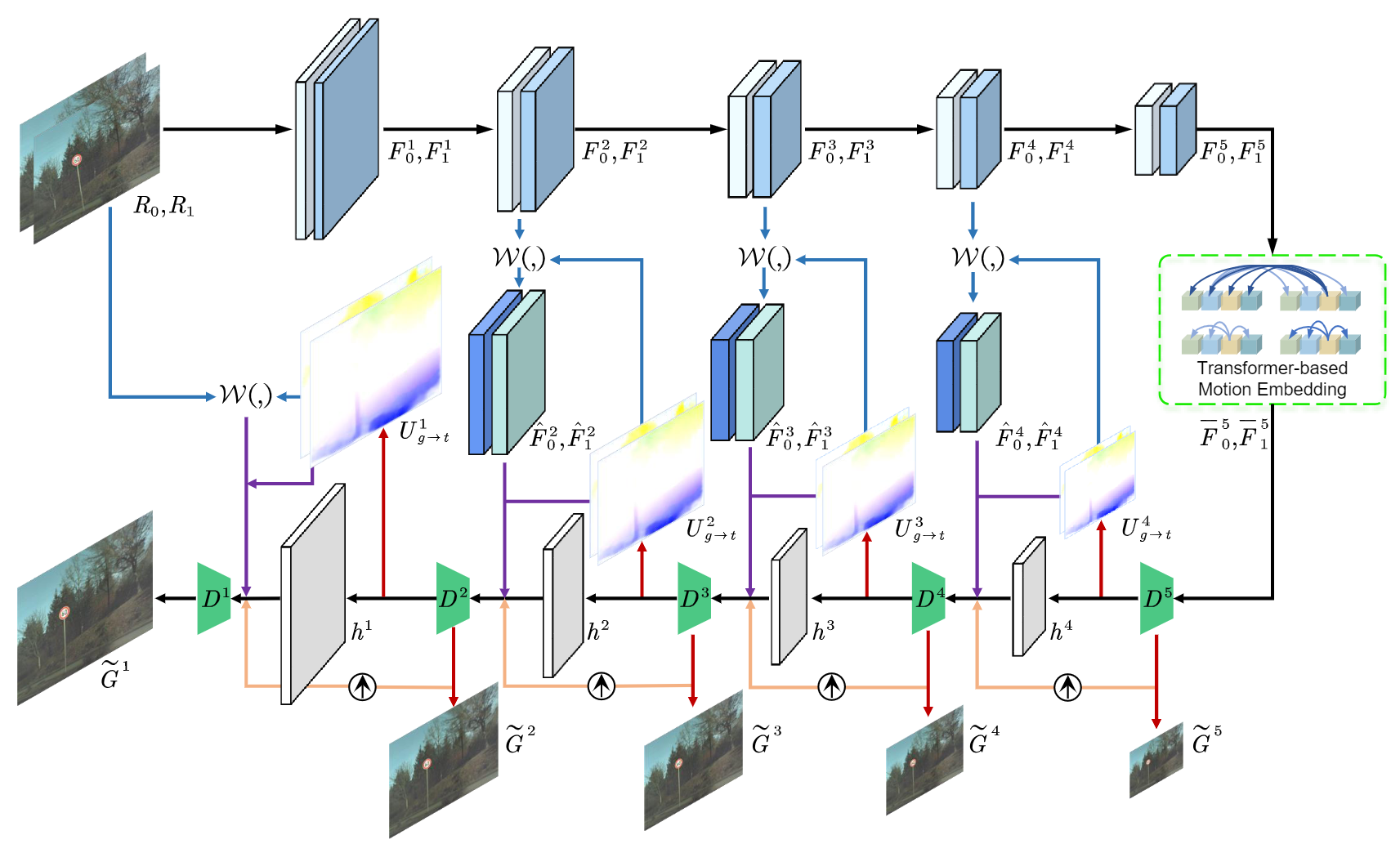Abstract
Rolling shutter correction (RSC) is becoming increasingly popular for RS cameras that are widely used in commercial and industrial applications. Despite the promising performance, existing RSC methods typically employ a two-stage network structure that ignores intrinsic information interactions and hinders fast inference. In this paper, we propose a single-stage encoder-decoder-based network, named JAMNet, for efficient RSC. It first extract pyramid features from consecutive RS inputs, and then simultaneously refines the two complementary information (i.e., global shutter appearance and undistortion motion field) to achieve mutual promotion in a joint learning decoder. To inject sufficient motion cues for guiding joint learning, we introduce a transformer-based motion embedding module and propose to pass hidden states across pyramid levels. Moreover, we present a new data augmentation strategy “vertical flip + inverse order” to release the potential of the RSC datasets. Experiments on various benchmarks show that our approach surpasses the state-of-the-art methods by a large margin, especially with a 4.7dB PSNR leap on real-world RSC.


